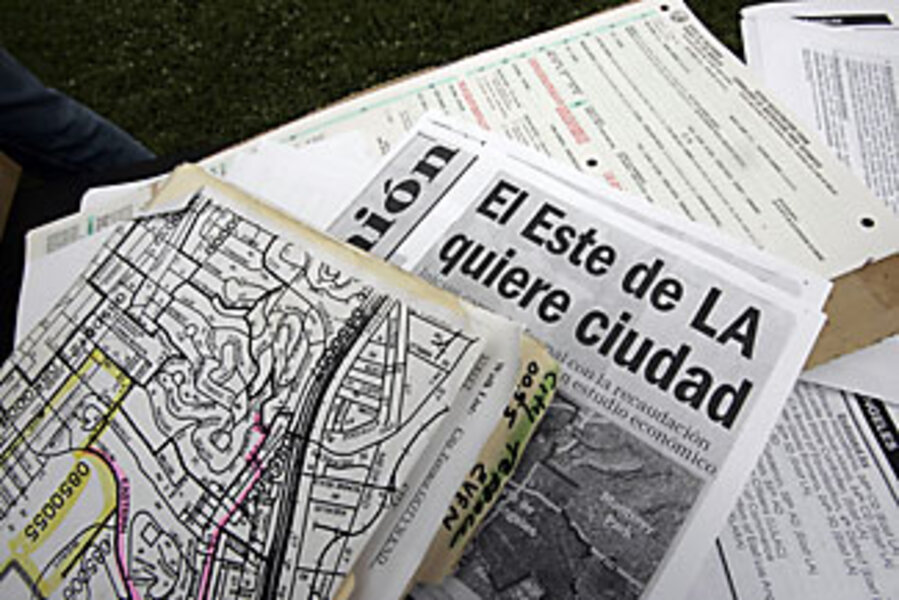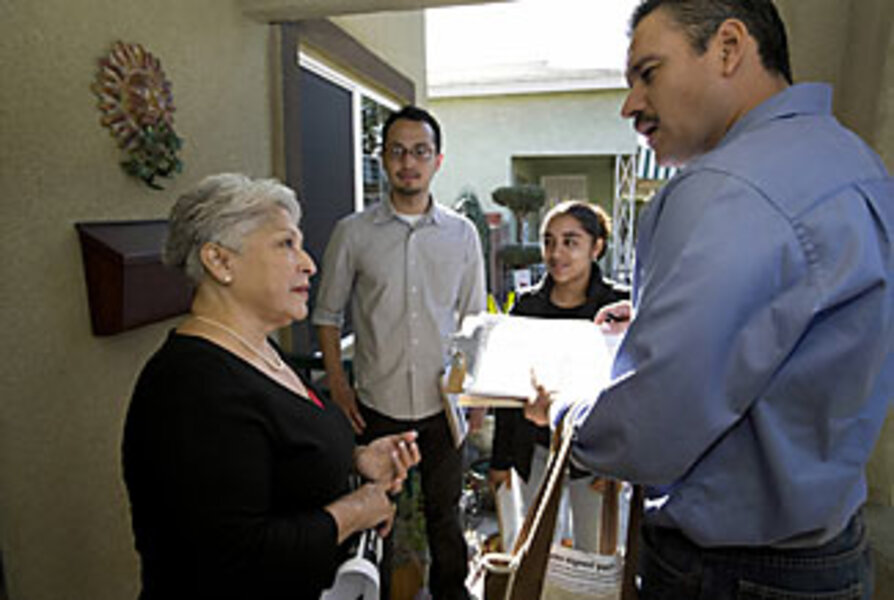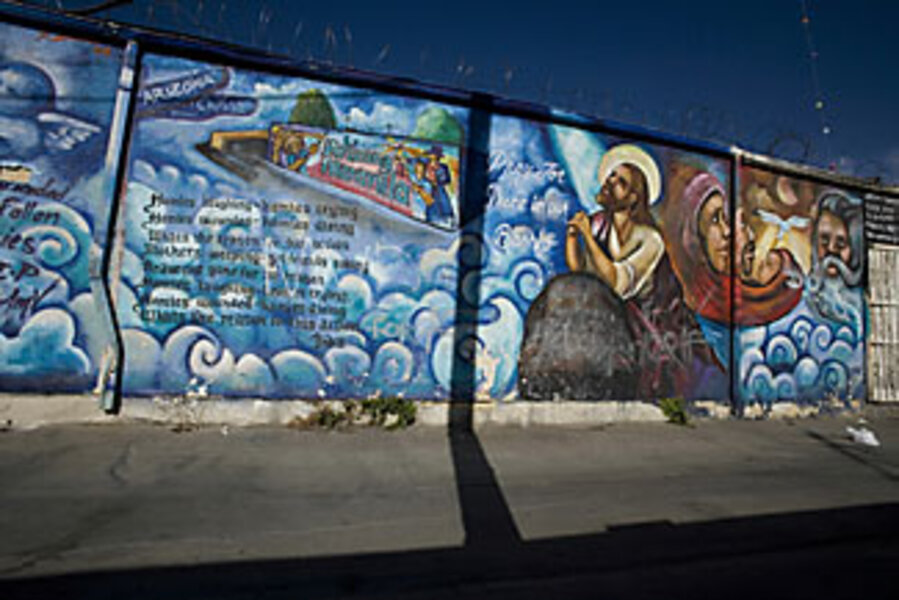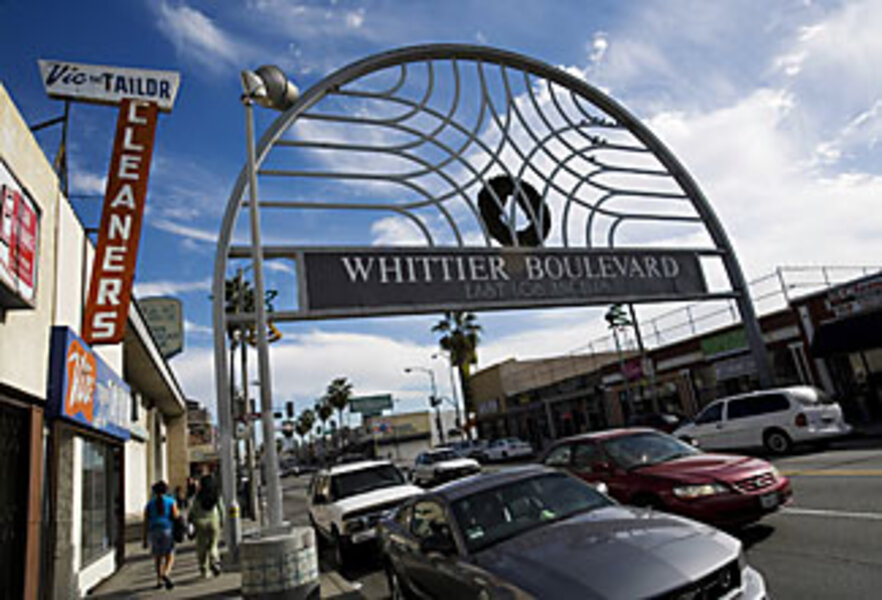East L.A., Latino heartland, revives its dream of cityhood
Loading...
| East Los Angeles
As the rumble of lowriders echoes down narrow streets lined with taco trucks and mural-covered walls, Oscar Gonzales walks from yard to yard.
"We're gathering signatures to make East L.A. into a city of its own," he tells one woman at a small house just off Cesar Chavez Blvd., named for the leader of the Chicano rights movement of the early 1960s. "We don't have a mayor or city council, so when the community goes to the state capital or Washington to bring back money, nobody is out there fighting for us."
The mostly Latin community here was immortalized by the 1987 Cheech and Chong comedy film "Born in East L.A.," in which the pot-smoking protagonists have repeated run-ins with US immigration officials. Crammed tightly into 7.4 square miles, East Los Angeles is to Mexican-Americans what Harlem is to African-Americans: ethnic symbol, social center, and cultural capital.
First stop north of the border for thousands of immigrants, the gritty urban area is the birthplace of world boxing champion Oscar de la Hoya and home to many Latino luminaries including Cheech Marin, one half of the comedy duo.
Now unincorporated, with a population of 130,000 and a median income of $28,000, East L.A. would be poised to take the national lead in Latino political power, which has been increasingly flexing its muscle every new US election.
"There are probably 100 city regions packed with Latinos just like us who would look over their shoulder, take pride and try to replicate us in this political new era created by Barack Obama," says Mr. Gonzales, who is president of the East Los Angeles Residents Association, the prime mover behind the effort.
A four-color flier handed out by Gonzales tells residents why cityhood is an idea whose time has come.
"Its rich history is a reflection of the Latino struggle for the American dream," says the flier. It lists the benefits of cityhood for the area: better local representation and services – including parks, public safety, street maintenance – captured revenues, and national recognition.
Campaign organizers will submit the necessary signatures to the county's Local Agency Formation Commission Dec. 12, which will then launch hearings and an economic feasibility study for the new city.
The move by East L.A. residents represents the latest chapter in the decades-long march by American Latinos to register, vote, and increasingly win positions in city, state, and federal government.
Two years ago, they surpassed African-Americans as the largest minority. The number of Latino elected officials has grown significantly over the past 10 years: From 3,743 in 1996 to 5,475 in 2008 – a 46 percent increase.
Beyond these political gains, incorporation may be a way to change the structure of governance itself.
"Latinos are finding they need to rethink city and regional government because they finally have a seat at the table and have realized the table only has three legs," says Antonio Gonzalez, president of the William C. Velasquez Institute, an L.A.-based Latino policy think tank, and of the Southwest Voter Registration Education Project. "California is the test tube of America at the leading edge of demographic change. It's like a teaching college for the rest of the country."
Three previous efforts to create a city of East L.A. have failed. These go back to 1960 when proponents argued that cityhood would provide much needed representation for Mexican-Americans long marginalized from politics.
This time, there are several reasons to believe the timing may be right, says Tom Hogen-Esch, an associate professor of political science at California State University, Northridge. For one, California's Proposition 13 – which drastically cut property taxes in 1978 – means that business owners and homeowners know their property taxes cannot be raised in a new city without their consent.
Homeowner fears of higher taxes were cited as reasons for the idea's defeat in 1961, 1963, and again in 1974, when there was a growing Chicano Civil Rights Movement. At that time, there were no Latinos on either the L.A. County Board of Supervisors or the L.A. City Council. Now there are four on the City Council and one on the Board of Supervisors. The mayor is also Latino.
The latest effort, unlike previous ones, also has strong business, union, and political backing. A key subway extension to the area is expected to generate more commercial development and additional tax revenue. The neighborhoods also have begun to erase their reputation as gang-infested crime centers – perpetuated by popular films such as "Born in East L.A."
The downside of the timing, says Mr. Hogen-Esch, is that the unstable US economy that may make residents more averse to risk. A 1992 change in state law – requiring cities to pay counties any revenues lost by incorporation – has also slowed the number of communities incorporating statewide. Thirty-four cities were incorporated between 1980 and 1990, compared with just 11 in the following 18 years.
"If East L.A. decides to go ahead and incorporate, it would be a great model for many historically underserved communities," says Phoebe Seaton, program director of the Community Equity Initiative of California Rural Legal Assistance, a project examining infrastructure inequality among 220 unincorporated Latino communities in the state's Central Valley.
"More than 33 years after the last attempt, the political path for East Los Angeles cityhood appears to be more favorable," says Hogen-Esch. "It may be that this time around, widespread community and political support will finally trump economic fears. If so, look out Harlem – here comes East L.A."









